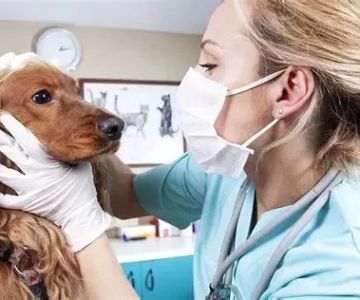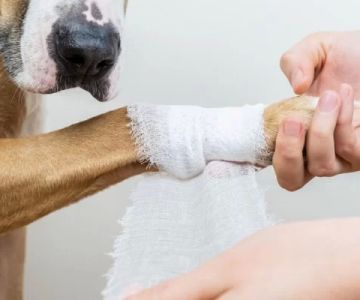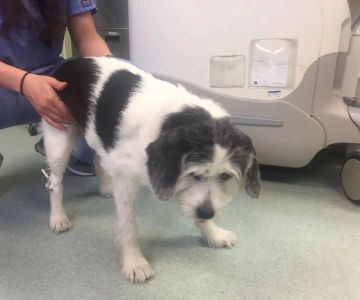- 1-pet-obesity-in-america-a-growing-concern
- 2-root-causes-of-pet-obesity-in-the-united-states
- 3-health-risks-associated-with-overweight-pets
- 4-how-to-help-your-pet-maintain-a-healthy-weight
- 5-real-life-case-chubby-charlie-sheds-the-pounds
- 6-partnering-with-hidden-brook-veterinary-for-your-pets-fitness
1. Pet Obesity in America: A Growing Concern
Pet obesity in America has reached alarming levels, with over 50% of dogs and cats now classified as overweight or obese. What’s most troubling is that many pet owners don’t even realize their furry companion is at risk. Unlike humans, pets can’t make dietary choices or initiate exercise—they rely entirely on us.
This epidemic isn’t just about appearance; it’s a serious threat to their quality of life and lifespan. Recognizing the early signs and understanding the impact of pet obesity is the first step to being a more informed, empowered pet parent.

980 E Northwest Hwy, Arlington Heights, IL 60004, USA
See Details2. Root Causes of Pet Obesity in the United States
2.1. Overfeeding and High-Calorie Treats
Portion distortion is common. Owners often feed pets more than they need, especially when using food as a form of affection. Treats packed with calories—like cheese, bacon bits, or table scraps—can quickly add up, especially in small dogs and cats.
2.2. Lack of Exercise
Modern lifestyles mean more pets are living indoors with limited space or stimulation. Without regular walks or play sessions, pets burn fewer calories and gain weight faster than expected.
2.3. Misconceptions About Healthy Weight
Many owners think a round, “fluffy” dog or cat looks cute and healthy. But when ribs are hard to feel, or the waistline is gone, those are telltale signs of weight problems. Vets often encounter well-meaning owners who are surprised to learn their pet is overweight.
3. Health Risks Associated With Overweight Pets
The consequences of obesity in pets go far beyond limited mobility. It increases their risk of:
3.1. Diabetes
Overweight dogs and cats are significantly more likely to develop diabetes mellitus, requiring lifelong management and insulin therapy.
3.2. Joint Pain and Arthritis
Extra weight puts pressure on joints, accelerating the onset of arthritis and making everyday movements painful—especially in large breeds and senior pets.
3.3. Heart and Respiratory Problems
Obese pets may suffer from labored breathing, reduced stamina, and an increased risk of cardiac issues during anesthesia or exertion.
3.4. Reduced Lifespan
Studies have shown that overweight pets live, on average, two years less than pets at a healthy weight.
4. How to Help Your Pet Maintain a Healthy Weight
4.1. Use a Vet-Approved Feeding Plan
Caloric needs vary by breed, age, and activity level. Speak to a veterinarian about the right amount of food and ideal portion sizes. Measuring your pet’s meals accurately is one of the simplest changes that has the greatest impact.
4.2. Choose Smart Treats
Limit calorie-heavy snacks and opt for healthy alternatives like baby carrots, green beans, or low-fat, vet-recommended treats. Remember, treats should make up no more than 10% of your pet’s daily intake.
4.3. Keep Them Active
Regular physical activity is essential. Whether it’s a brisk daily walk, fetch at the park, or interactive toys for cats, movement keeps your pet fit and mentally stimulated. Indoor pets especially benefit from toys that mimic hunting or chasing behaviors.
4.4. Regular Weigh-Ins
Weigh your pet monthly and keep track of the trend. Small changes over time are easier to correct than waiting until obesity has set in.
5. Real-Life Case: Chubby Charlie Sheds the Pounds
Charlie, a 7-year-old beagle from Ohio, weighed nearly 45 pounds—10 pounds over his ideal weight. His owner, Mark, thought Charlie was just “extra cuddly” until their vet warned about the risk of diabetes and arthritis. After a full checkup at Hidden Brook Veterinary, Charlie was placed on a custom diet plan and gentle walking regimen.
Within six months, Charlie had lost 8 pounds. Not only was he more active, but his joint pain eased, and he began playing again like he used to. Mark now monitors portions closely and celebrates with playtime instead of treats.
6. Partnering With Hidden Brook Veterinary for Your Pet’s Fitness
Managing your pet’s weight isn’t a one-time fix—it’s a lifestyle. At Hidden Brook Veterinary, we offer weight evaluations, custom diet programs, and wellness plans to help your dog or cat stay lean and healthy for years to come.
Whether you're unsure if your pet is overweight or you’ve noticed they’re slowing down, our team is ready to guide you. With expert support and compassionate care, we help you take the guesswork out of pet fitness—so your best friend lives a longer, healthier life by your side.











